

This Reformation took place in the Czech Republic, at times referred to as Bohemia.
Prerequisite Reading
We strongly recommend reading of our post “The Need for the Protestant Reformation” prior to reading this or any of the other Reformation posts we have written.
Revival or Reformation?
There are similarities between a revival of a church and a church’s reformation. We will not discuss the differences, but we do want show through our Pre-Reformation Movements and Reformation stories, that God has always had people within His Church to bring it back into proper order.
John Hus and the Hussites
The 1382 Lollard Revival (John Wycliffe) in England was just starting when the Bohemian (Czech) John Hus (c. 1372-1415) was only 10 years old. At age 18 he entered the University of Prague to study to become a Catholic priest.
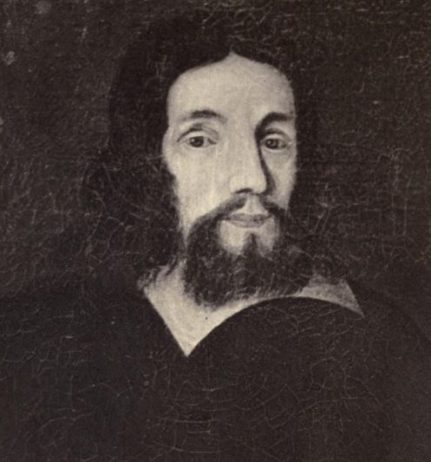
Catholic Priest:
John Hus
The Priesthood
While studying at the university, an acquaintance (Jerome of Prague) gave Hus some of John Wycliffe’s writings. These writings highly influenced him, and with the news of the spreading English Lollard Revival, Hus found courage to stand up and start speaking what he believed.
When Hus completed his master’s degree in 1400, he was appointed to the Bethlehem Chapel in Prague. It was at that chapel where he began stepping outside Catholic Church tradition, preaching in the people’s language directly from the Bible as his source of authority.
With Hus coming from among the common ranks of the people, he obtained an immediate following. The Czech people felt marginalized because they were being governed by a minority of Germans, and they had little to no voice in the affairs of their life. They heard Hus calling for reforms in the Catholic Church, and in time Hus became a figure of Czech nationalism.

John Hus’ hometown was Husinec. That is where his name “Hus” was derived. Being from a lower-class family, Hus was admitted into the university as a “charity student”
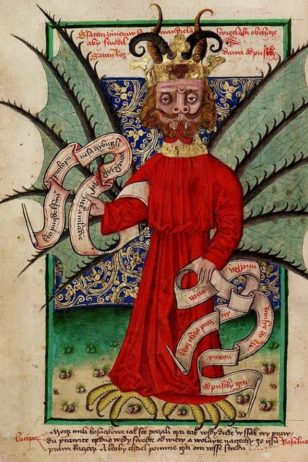
Satan selling indulgences
A Few of the Church’s Teachings and Practices that Hus Opposed
The initial Protestant reformers did not want to start another church (denomination); they just wanted reform to eliminate the unbiblical aspects and corrupt practices within the Catholic Church. These are just a few of the objections that reformers focused on. (For more info, see the Lollard or Luther lists.)
1. The Church and government authorities should be separate.
2. The doctrine of transubstantiation is idolatrous.
3. Selling indulgences is robbery.
4. Justification is by faith, not through participation in the sacraments or religious works.
5. The Bible is the ultimate authority
Condemnation of Hus’ Teachings
In 1408-09, the archbishop of Prague condemned Hus’ teachings, as did Pope John XXIII. The Catholic Church recognized Wycliffe’s influence in everything Hus was propagating, and they also knew the problems Wycliffe’s Lollard Revival had caused England. Not wanting a similar revolt, this condemnation was a warning for Hus to bring his rebellious and inflammatory talk to an end.
When Pope John XXIII launched a crusade against the king of Naples, he financed it through the sale of indulgences. With the sale having begun in Prague, Hus declared his strong opposition:
Let who will proclaim the contrary; let the Pope, or a Bishop, or a Priest say, ‘I forgive thee thy sins; I free thee from the pains of hell.’ It is all vain, and helps thee nothing. God alone, I repeat, can forgive sins through Christ.
Riots ensued due to the sale of these indulgences and people were arrested, with three of them being beheaded. Hus held a public funeral for those three, and that action hurtled him to the forefront of the reform movement.
Excommunication of Hus
Hus not only had his preaching condemned, but he was also excommunicated. This forced him to leave the Bethlehem Chapel, and with his life in jeopardy he went into hiding in the Czech countryside, yet he continued preaching and writing there. During this time his followers increased dramatically, and they took on the name Hussites.
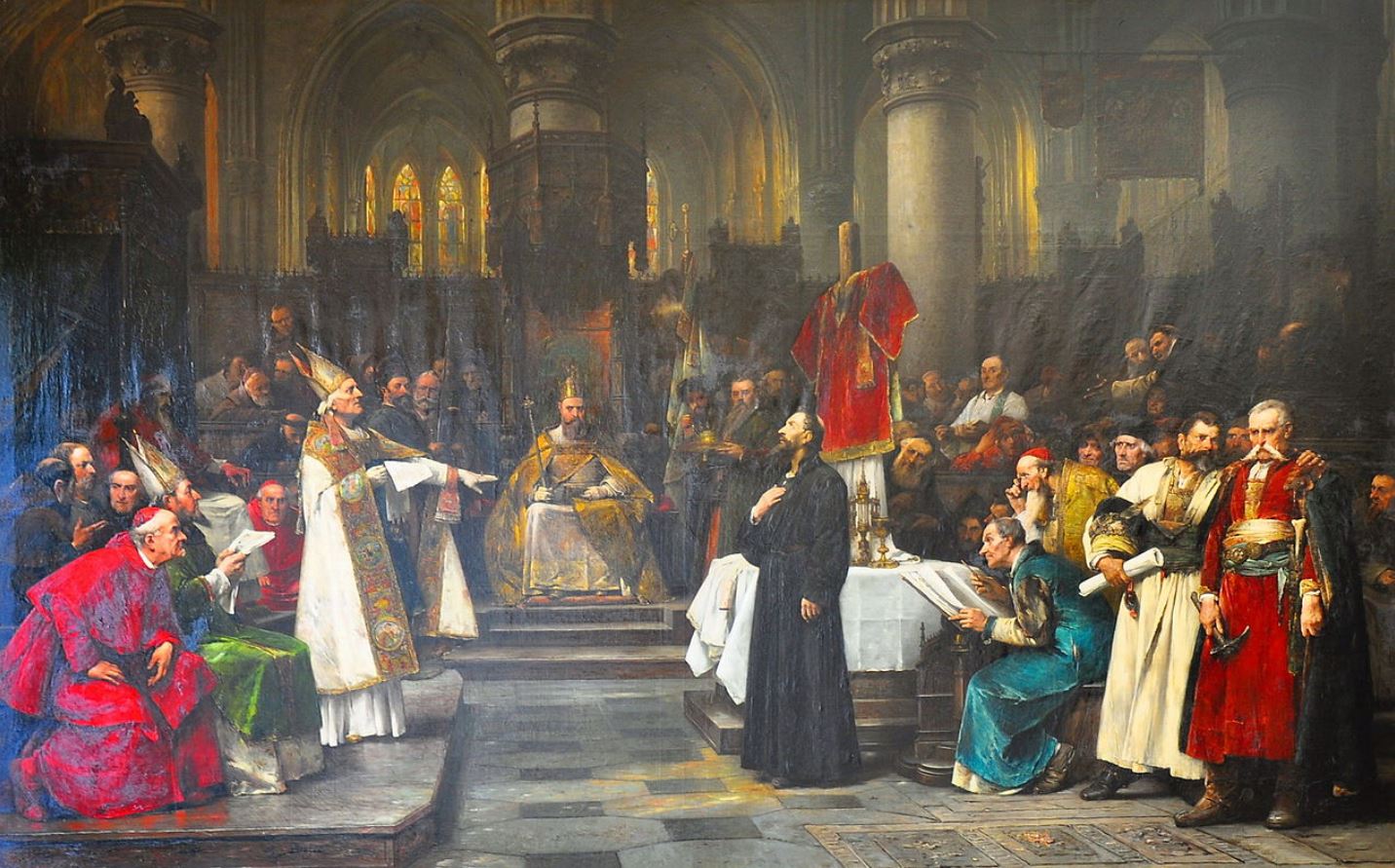
Hus on trial at the Council of Constance
Hus on Trial
A Great Schism was splintering the Catholic Church, with two popes claiming that title and position. The emperor of the Holy Roman Empire, Sigismund, pressured Pope John XXIII to hold a council at Constance, Germany in 1414-1415 to bring an end to the division.
With the divisiveness surrounding Hus’ teachings, he was also asked to come and appear before the council at this same time. Emperor Sigismund promised him safe passage, in that he would not be arrested, and that he would have a fair hearing.
Upon Hus’ arrival in Constance, however, he quickly learned that the terms of safe passage would not be honored, and Pope John XXIII had him imprisoned.
When Hus’ hearing did occur, it was not for him to present a defense, but only to listen to the charges and to be given the opportunity to recant of his errors. Hus’s response was:
What errors shall I renounce? I know myself guilty of none. I call God to witness that all that I have written and preached has been with the view of rescuing souls from sin and perdition, and therefore most joyfully will I confirm with my blood the truth I have written and preached.
With Hus standing to his words that he wrote and preached based on the Bible, the council condemned him to be burned at the stake.
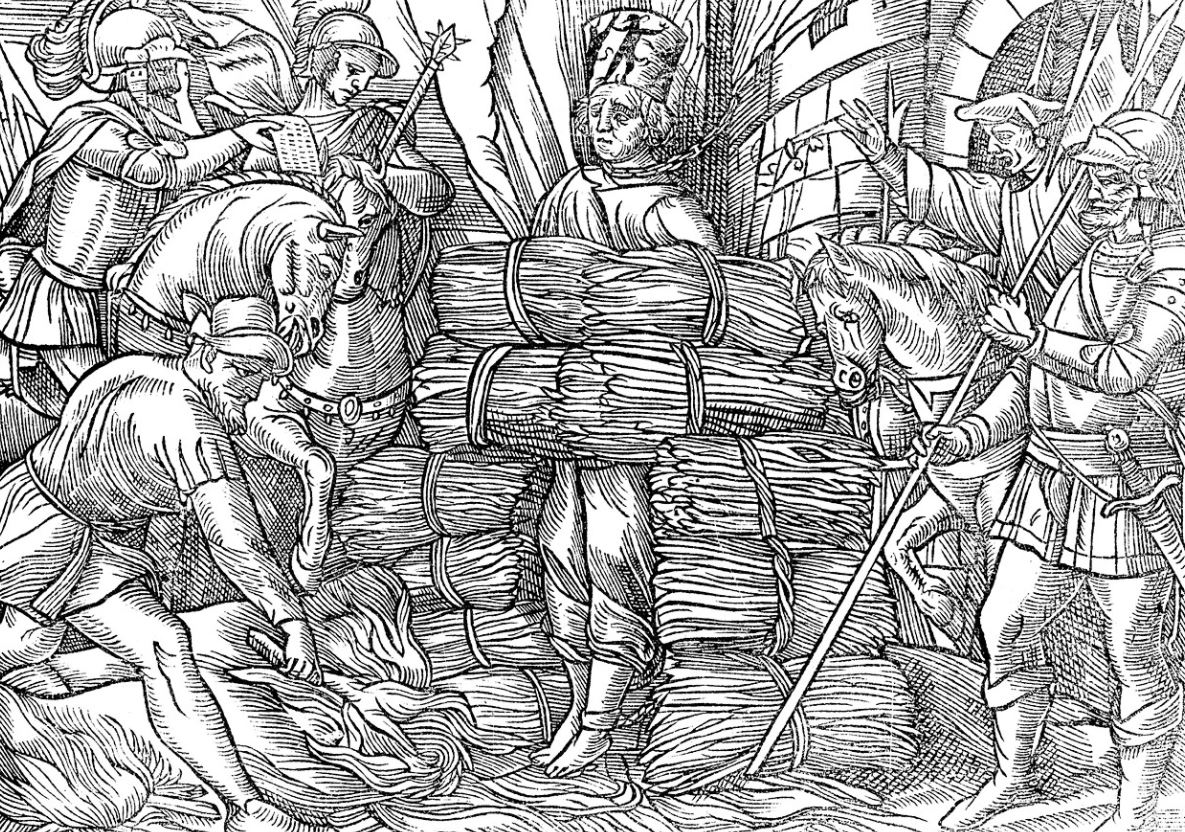
John Hus being burned for heresy
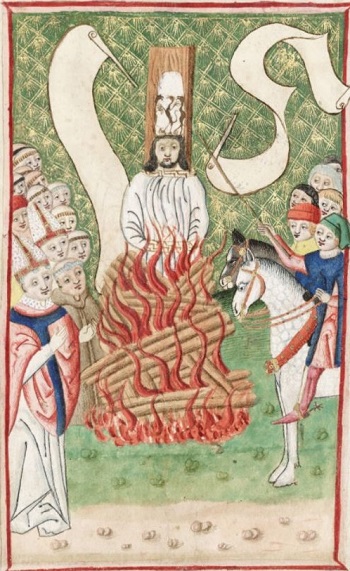
Hus being burned.
His “crown” had demons painted on it.
John Hus Burned at the Stake
Hus was burned at the stake on his 56th birthday, July 6, 1415, on the edge of Constance, Germany. To prevent his followers from building a memorial out of his grave, Hus’ remains were collected and thrown into the Rhine River.
Results of the Reform Effort
Over the next 300 years the followers of Hus suffered through much persecution. They often found it necessary to meet in secret, hidden in rural villages, until refuge was found on the estates of Count Zinzendorf, in the early 1700s where the 1727 Moravian Revival occurred.
Sources
► A History of the Moravian Church by J. E. Hutton
► Bohemian Reformation by Wikipedia
► Hussite by Britannica
► Jan Hus by Wikipedia
► John Huss His Life, Teachings, and Death by David S. Schaff
► John Hus The Martyr of Bohemia by Nathaniel W. Schwarze
► Moravian Church by Wikipedia
► The Dawn of the Reformation by Herbert R. Workman
► The Life and Times of John Huss by E. H. Gillett
► The Ten Greatest Revivals Ever by Elmer Towns
► The Church by John Huss
► The Life & Times of Master John Hus by The Count Lutzow
► The Torch-Bearers of Bohemia by V. I. Kryshanovskaya
► Unity of the Brethren by Wikipedia
Video
► Before Luther: John Wycliffe and Jan Hus by a Bit of History
► John Huss: Church History in Three Minutes by CH3
► Jan Hus and the Hussites by Ryan Reeves
► John Hus: the Journey of No Return by VISTAFILM Production
► Huss & Jerome – Bohemian Reformation | Episode 12 | Lineage
Return to List of Revival Stories
Chet & Phyllis Swearingen
(260) 920-8248
romans1015@outlook.com
Beautiful Feet
P.O. Box 915
Auburn, IN 46706

